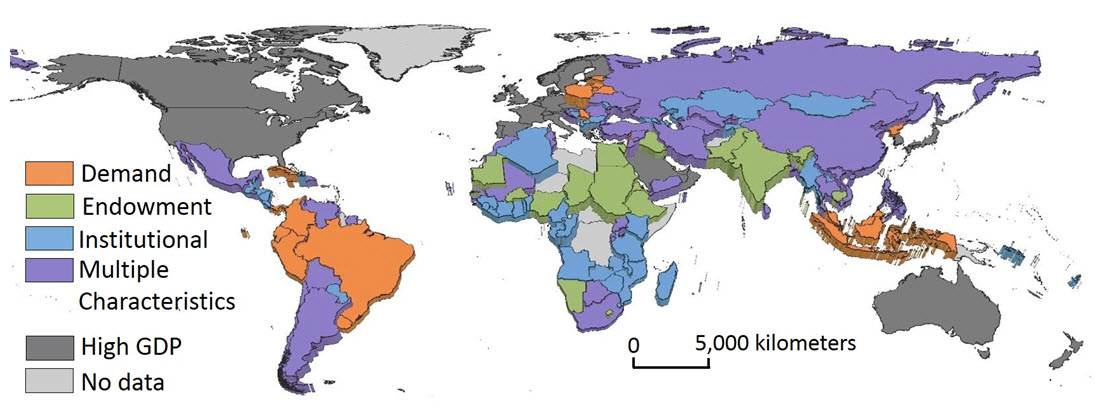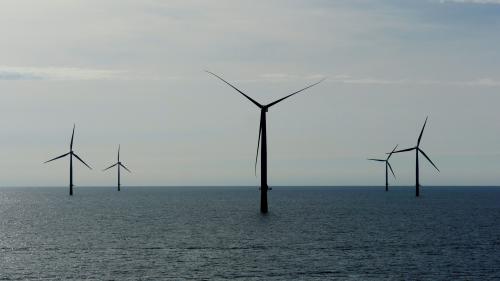On April 22, 1970, 20 million Americans participated in massive rallies and events across the country with the goal of raising awareness of the deterioration of the environment, and to spur government action to support a healthier and more sustainable world. By the end of that year, their voices were heard: Bipartisan efforts in Congress led to the creation of the United States Environmental Protection Agency, and the passage of the Clean Water, Clean Air, and the Endangered Species Acts.
Forty-seven years later, Americans are still gathering around the country for Earth Day events, but according to the nonprofit Earth Day Network, there’s a growing need to promote a stronger understanding of environmental threats and the policies that address them. To that end, the network has designated the theme of Earth Day 2017 “environmental and climate literacy,” which it says is the first step toward continued environmental progress.
Here at Brookings, our experts are constantly working on promoting a better understanding of the role that public policy plays in improving our world, including the many and complex facets of environmental policy. And according to their research, these are five things you should know as you spend Earth Day (or any day!) expanding your environmental literacy:
1. 7 OUT OF 10 AMERICANS ACCEPT EVIDENCE OF CLIMATE CHANGE
Though President Trump has a long record of challenging the existence of global warming and recently passed an executive order aimed at re-energizing the coal industry despite its link to climate-changing carbon emissions, the majority of Americans have different views on climate change.
According to the fall 2016 version of the National Surveys on Energy and the Environment (NSEE), conducted in the lead-up to Trump’s election, 70 percent of Americans stated that there is solid evidence of global warming, with 17 percent not seeing such evidence and 13 percent not sure. This, say researchers Christopher Borick, Sarah Mills, and Barry Rabe, who is a Brookings nonresident senior fellow, is almost identical to where public opinion stood on climate change just prior to Barack Obama’s victory in 2008, when 72 percent of Americans indicated that they thought there was solid evidence of global warming.
Figure 1: American views on the existence of evidence of global warming, 2008-2016

2. Oceans are gaining recognition in critical climate discussions
According to ocean researchers Lindley Mease and Kristen Weiss, the environmental policy tide recently turned in favor of oceans at COP21 United Nations Climate Talks in December 2016. During the Paris meeting, 195 countries signed a historic deal known as the Paris Agreement, which aims to reduce the world’s output of greenhouse emissions. To the delight of ocean advocates, researchers, and other stakeholders, the agreement also explicitly referenced the world’s oceans.
Mease and Weiss call this a huge win for the ocean preservation community, as oceans had never before been a significant part of U.N. climate discussions. Despite this new wave of support, they caution that “while the inclusion in the climate agreement signals movement in the right direction, oceans face many critical challenges as global warming continues.”
3. Fresh water scarcity is fueling regional conflicts
Research from Steven Gorelick and Julie Padowski finds that 119 low-income countries have at least a moderate level of vulnerability when it comes to fresh water scarcity, and that these vulnerabilities are related to both natural and human factors. They point out that in regions like northern Africa and South Asia, vulnerability to fresh water scarcity results from low volumes of renewable fresh water, a high dependency on neighboring countries for fresh water, and poor access to sanitation.
Figure 2: Number of freshwater supply vulnerability characteristics and dominant cause of vulnerability by country

In Latin American and Southeast Asian countries, large urban populations put a strain on freshwater supply. Of particular concern, however, are low rainfall countries like Djibouti and Yemen, which also suffer from significant government corruption, as well as Jordan, where an influx of hundreds of thousands of Syrian refugees has placed an additional strain on water supply.
When it comes to developing policy solutions, the authors say that it’s important to properly identify the underlying causes of water vulnerability in order to successfully address them, but that interventions that are effective for one region may be transferrable to other regions that have the same set of vulnerability characteristics. Overall, they say, their work points to “a clear need for more comprehensive assessments of institutional factors in fresh water vulnerability analyses at regional or global scales.”
4. In order for anti-poaching policies to be effective, demand for wildlife products must be reduced
The planet is currently experiencing alarming levels of species loss, caused in large part by intensified poaching. According to Senior Fellow Vanda Felbab-Brown, the current rate of species extinction is as much as 1,000 times the historical average, and is at the highest levels seen since the dinosaurs died out 65 million years ago.
Figure 3: What and where animals are poached worldwide

Though wildlife trafficking is generating unprecedented policy attention from many nations that are working toward ending these devastating practices, Felbab-Brown argues that current efforts are simply not enough. The bottom line, she says, is that in addition to existing trade, legal, and other ramifications against poachers, demand for wildlife products must be reduced or kept low in order to curb trafficking activities. Campaigns focused on the personal health and social costs associated with consumption of wildlife could help, as could messaging aimed at debunking myths around the bogus benefits of these animal products.
Though there’s no silver bullet policy solution to stop poachers, Felbab-Brown affirms that “it’s our moral imperative as well as in our own self-interest to do all we can to preserve the planet’s species and biodiversity.”
5. The Trump administration could reverse progress on climate change, but there are still reasons for optimism
David Victor, the co-chair of the Energy, Security and Climate Initiative at Brookings, argues that the Trump administration’s climate policies will be harmful in two ways. First, President Trump has signaled that he would renege on U.S. commitments under the Paris agreement to help developing countries cope with the effects of climate change. And second, American leadership in implementing the Paris agreement and on climate issues more broadly is likely to shift to other world powers, especially China.
Many states and localities will continue to comply with national climate policies and even double down on innovation in clean energy and emissions reductions.
Nonetheless there are several reasons to be optimistic about the course of U.S. environmental policy under the current administration. As Senior Fellow Mark Muro points out, many states and localities will continue to comply with national climate policies and even double down on innovation in clean energy and emissions reductions. Similarly, market forces that favor cleaner, cheaper energy such as wind, solar, and natural gas will remain; technological breakthroughs such as fracking will continue unabated; and private finance initiatives will continue to drive the transition to a low-carbon economy.
Get more research from our Energy Security and Climate Initiative.
Amanda Waldron contributed to this post.
The Brookings Institution is committed to quality, independence, and impact.
We are supported by a diverse array of funders. In line with our values and policies, each Brookings publication represents the sole views of its author(s).





Commentary
On Earth Day, 5 things you need to know about environmental policy and research
April 21, 2017